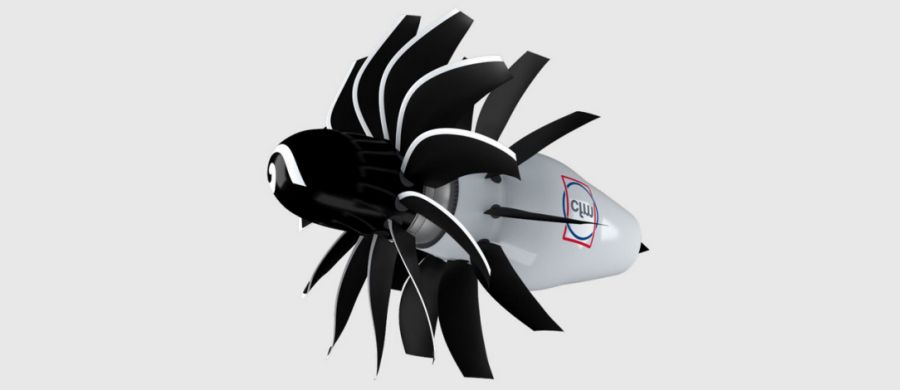SAFRAN AND GENERAL ELECTRIC'S GREEN ENGINEFOR AEROSPACE |
|
The June 14, 2021 will be one of the great dates of aeronautics in its race to decarbonisation. Barely six years after the entry into service of the LEAP engine, which brought about a 16% gain in fuel consumption, General Electric and Safran plan to launch an engine within the next fifteen years or so, with a complete technological breakthrough with the architectures. observed so far, which would further reduce fuel consumption by more than 20%. A key element for the decarbonisation of aviation, while this sector is singled out by part of the population for the CO2 emissions it generates, which are between 2 and 3% of global emissions. The aircraft of the future will not fly at best before 2035, but it already has its engine. In this race for decarbonization, the French Safran and the American General Electric (GE), united in the partnership at 50-50 CFM International, announced, Monday, June 14, the launch of a program to develop new technologies for equip a new generation engine that is much less polluting and more fuel-intensive than current models. Rise, the big bet of the green engine of Safran and GE This is the bet that the boss of Safran Olivier Andriès and that of GE Aviation John Slattery are taking with an ultra-sober aircraft engine, running on 100% biofuel or hydrogen in 2035. Called “Rise” (Revolutionary Innovation for Sustainable Engines), this program should develop an engine 20% more fuel-efficient than current reactors, and capable of running on liquid hydrogen or 100% biofuels. According to Olivier Andriès, CEO of Safran, and John Slattery, CEO of GE Aviation, the future propellant is expected to consume 20% less fuel and reduce its carbon dioxide (CO2) emissions accordingly. A low estimate, because at Safran, we expect a technological breakthrough "15-year journey" “Despite the crisis, the time to invest is now,” says Olivier Andriès. We are embarking on a fifteen year journey. We know it will take billions to invest, but it is our responsibility to be at the forefront of this battle. " The two partners are not at their first attempt. Created in 1974 in the wake of a meeting between Presidents Richard Nixon and Georges Pompidou in Reykjavik, their CFM joint venture has established itself as one of the greatest success stories in aeronautics. Owned 50-50 by the two manufacturers, it has developed the best-selling aircraft engine in history, the CFM56 (nearly 34,000 units delivered), on board the Airbus A320 and the Boeing 737. It now surfs on the commercial carton of the Leap engine, which, since 2016, powers the Chinese A320neo, 737MAX and C919. With 18,000 copies sold, and very few cancellations during the crisis, its order book is estimated at 270 billion dollars. Revolutionary motor The Rise program is intended to be the third stage of the CFM rocket. “New design, new materials, hybridization… We want this engine to be a revolution,” says John Slattery. GE and Safran are considering a so-called “open fan” design, ie an engine without a fairing. This technical choice allows blowers of larger diameter, and therefore an engine with better energy efficiency. Beyond the greening of aviation, the objective of this technological bet is also to keep a distance from formidable competition (Pratt & Whitney, Rolls-Royce and the new Chinese entrant Aero Engine Corporation of China). |
|
| Luc T. for DayNewsWorld | |
 |
|




